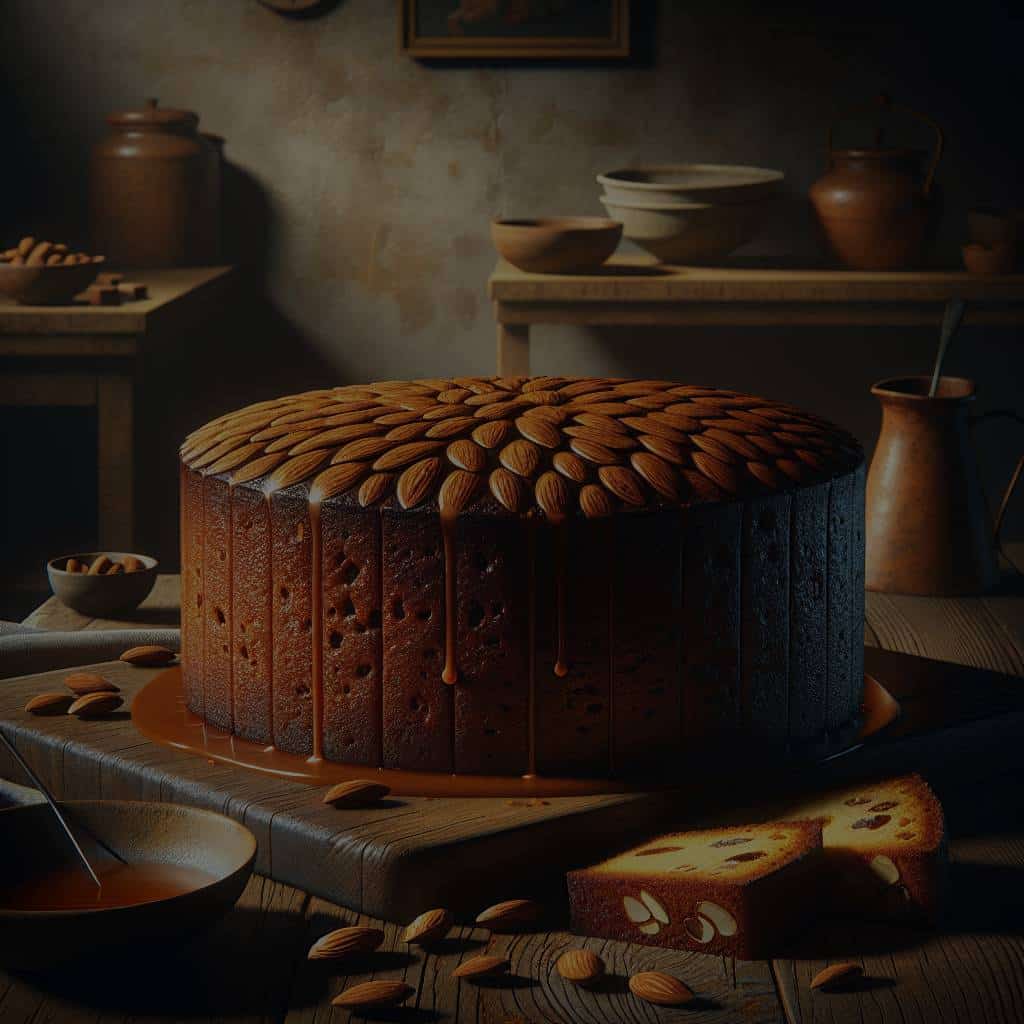Imagine the perfect Dundee cake. The Scottish delight with the sweet tang of orange marmalade, the crunch of almonds, and the moistness of mixed fruit, all mingled within a rich, buttery base. Now, what if you could recreate that in your very own kitchen?
In this article, we’ll take you through the steps to create this delightful treat. We’ll provide simple and clear instructions, ensuring that you’ll have a delicious Dundee cake in no time.
In the same genre : How Can You Infuse Classic British Scones with Earl Grey Tea Flavors?
Understanding the Dundee Cake
Before we dive into the actual baking process, it’s essential to understand what a Dundee cake is. This traditional Scottish fruit cake is known for its distinct almond flavor and its moist texture.
The Dundee cake differs from other fruit cakes, mainly due to the use of marmalade and its signature decoration of concentric circles of almonds on top.
Also read : How Can You Perfect a Classic British Eton Mess with Homemade Meringues?
Gathering Your Ingredients
This recipe calls for a selection of ingredients that, when combined, create a symphony of flavors. Here’s what you will need:
- 2 cups of self-rising flour
- 1 cup of softened butter
- 1.5 cups of caster sugar
- 4 large eggs
- 1 cup of mixed fruit
- 3 tablespoons of marmalade
- 1 cup of blanched almonds
- The zest and juice of one orange
- A pinch of salt
Remember, when baking, the quality of ingredients matters. Opt for fresh, high-quality products for the best results.
Prepping Your Cake Tin
Before you start mixing your ingredients, you’ll need to prepare your cake tin. Proper preparation will ensure that your cake doesn’t stick to the tin and comes out in one perfect piece.
First, take your baking tin and grease it thoroughly with butter. Make sure to cover every inch of the tin to avoid the cake from sticking. Next, line the tin with baking paper, ensuring it covers the bottom and sides. This double layer of protection will make it easier to remove the cake once it’s done.
Crafting the Cake Batter
Now to the heart of the Dundee cake – the batter. This buttery, orange-infused batter sets the base for the cake and carries the bulk of the flavor.
Start by creaming the butter and sugar together until it becomes light and fluffy. Gradually add in the eggs, one at a time, ensuring each is well incorporated before adding the next.
Once the eggs are mixed in, fold in the flour and a pinch of salt. To achieve a light, fluffy cake, remember not to overmix at this stage.
Next, stir in the mixed fruit, marmalade, and the zest and juice of an orange. This gives the cake its characteristic Dundee flavor.
Finally, spoon the batter into your prepared tin, spreading it evenly with a spatula.
Baking and Decorating Your Dundee Cake
With your cake batter ready, it’s time to put it in the oven. Bake the Dundee cake for approximately 90 minutes at 160°C (320°F). Remember, every oven is different, so start checking the cake around the 75-minute mark. A skewer inserted into the cake should come out clean, indicating it’s done.
Once baked, remove the cake from the oven and let it cool in the tin. As it cools, the top of your cake becomes the perfect canvas for decoration.
Press the blanched almonds into the top of the cake, arranging them in concentric circles. This traditional style not only looks appealing but also adds a wonderful crunch.
Final Thoughts
So there you have it, the classic Dundee cake with a rich almond flavor. While the process may seem complex at first, we assure you that the end result is worth the effort. So, roll up your sleeves and get baking! Your kitchen will soon smell of the sweet aromas of this Scottish delight, and your taste buds will thank you for it. Remember, practice makes perfect. Don’t be disheartened if your first Dundee Cake doesn’t turn out as expected. Baking is a learning process, and each time you try, you’re bound to get better. Happy baking!
The Role of Each Ingredient
In every cake recipe, every ingredient matters. In a Dundee cake, the synergy of ingredients creates a moist, flavorful, and delightful fruit cake. Let’s take a closer look at each component and their roles:
Self-rising flour serves as the base of the cake, providing structure. It contains baking powder, which helps the cake rise during baking, making it light and fluffy.
Softened butter adds richness and moistness to the cake. When creamed with sugar, it traps air, helping the cake rise and become light.
Caster sugar lends the cake its sweetness and contributes to its golden color.
Eggs work as a binder, holding all the ingredients together. They also contribute to the cake’s rise and enhance its flavor.
Mixed fruit is an essential element of this classic Scottish cake. They add texture, taste, and a certain chewiness that contrasts beautifully with the cake’s soft crumb.
Orange marmalade is a key ingredient that distinguishes the Dundee cake from other fruit cakes. It imparts a unique tanginess that balances the sweetness of the cake.
Blanched almonds contribute a delightful crunch and a rich almond flavor, enhancing the Dundee cake’s distinctiveness.
Zest and juice of an orange introduce a refreshing citrus note, elevating the overall flavor profile.
And lastly, a pinch of salt serves to heighten all these flavors, making your Dundee cake a truly flavorful delight.
Storing Your Dundee Cake
After enjoying a slice or two, you’ll likely want to store the rest of your Dundee cake for later. Proper storage can ensure that your cake remains moist and flavorful even days after baking.
Firstly, allow your cake to cool completely before storing it. Storing a warm cake can result in condensation and make it soggy.
Once cooled, wrap the cake tightly in cling film or foil. This will prevent air from getting in and drying out the cake.
Finally, place the wrapped cake in an airtight container and store it in a cool, dark place. A pantry or a kitchen cupboard away from direct sunlight is ideal. Your Dundee cake will stay fresh and delicious for up to a week.
If you want to store your cake for longer, you can freeze it. Just wrap it tightly and place it in a freezer-friendly container. It can last for up to 3 months. When you’re ready to enjoy it, leave it to thaw at room temperature for several hours.
In Conclusion
Creating a moist Dundee cake with a rich almond flavor in your home kitchen is entirely possible. All it takes is a little patience, a little care, and the right ingredients. This traditional Scottish delight, with its mix of sweet and tangy notes, the crunch from blanched almonds, and the moistness from the fruit and marmalade, is sure to win over anyone who tastes it.
Remember, as with any recipe, the more you practice, the better you’ll get. So don’t be disheartened if your first attempt at the Dundee cake isn’t perfect. Keep trying, keep tweaking until you find the perfect balance of flavors that suit your taste.
And once you’ve baked the perfect Dundee cake, don’t forget to share it with your loved ones. After all, a good cake becomes even better when shared. Happy baking!











